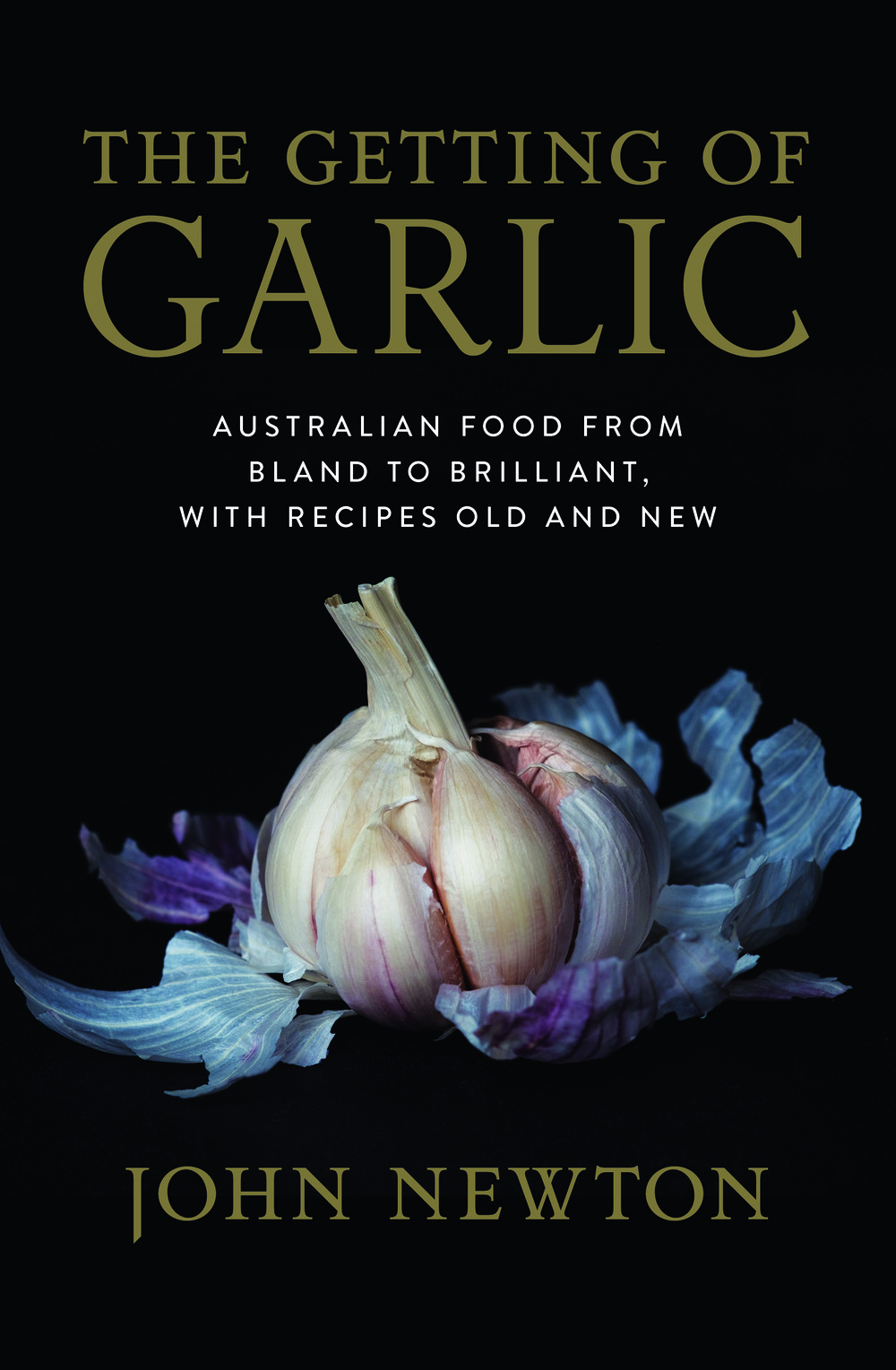Let me get one thing straight. This new book of mine, The Getting of Garlic: Australian food from bland to brilliant, with recipes old and new, is not just about garlic, although it does play a pivotal part in the story. But we’ll get to that.
What it’s about is Australian food. And by Australian food I mean what non-Indigenous Australians have been eating since 1788.
At first that meant the British/Anglo-Celtic population that arrived with the first fleet and spread, augmented by later settlers, across the entire continent taking their imported food culture and produce with them: regardless of the climate. This was noted by Phillip Muskett in his book The Art of Living in Australia as early as 1893:
The Australian people [have] never yet realised their semi-tropical environment. It would naturally be supposed that [this would have] exercised an irresistible effect on their mode of living … What is more significant than anything else, their food habits, prove incontestably that that they have never recognised the semi-tropical nature of their climate.
And then, after 1945, a second invasion of a disparate – and sometimes desperate – mob from around the world. They also brought their own food. We went from monocultural monoculinary to multicultural multiculinary in what appeared like a split second.
And this after sticking to the diet and the produce we had brought with us from the not so old country (Australia is millennia older) for almost 200 years: a massive shock to our collective gastrointestinal system.
From the bland and comfortable diet of meat and three veg with turkey and pud at Christmas we were dragged, often – but not always – kicking and screaming into the land of lasagne and laksa, chilli and chèvre, garlic and gado gado.
Understandably, after this transition, we were somewhat confused. What happened? And those of us who care about what we eat began to ask a simple question: what is Australian food?
It might be a simple question but there aren’t any simple answers. Here are just a few of the conundrums and problems I uncovered and explored in the book.
Firstly, why did we stick to that British/Anglo-Celtic diet for so long, around 180 years? I suggest a complex set of reasons: we were a long way from ‘home’ in an alien land that caused us disease. We huddled around its edges, feared its indigenous inhabitants, and so clung to one thing that was familiar: a comfortable diet.
Next, we may be the only country in the world without any recipes, neither regional nor national. And I’m not the only one to have noticed this. ‘We don’t,’ wrote food historian and scholar Barbara Santich, ‘have a repertoire of dishes that says who and what we are’. And that says a lot a lot about us.
Intrigued by this at a time when I wrote a column in a newspaper, then with a healthy circulation, I asked my many thousands of readers to help. Send me your regional recipes. I offered a prize. It was the only time I couldn’t find a winner. I did, however, find one regional dish. The Adelaide pie floater.
A lot of places served pies and peas. But only in Adelaide, and only in a handful of pie carts, was the pie served, preferably upside down, on a sea of mushy peas.
The reasons for this lack of regional Australian dishes are also complex, and have much to do with the colonising of the continent at about the same time as the beginning of the Industrial Revolution: from the outset, our food was industrial, our farms broadacre.
And so we get to garlic. In researching for this book, reading scores of old cookbooks, I detected a missing ingredient: garlic. This curious absence intrigued me. I found a quote from venerable Victorian writer of cookbooks and manuals of household management, Mrs Isabella Beeton, which gave me a clue:
The smell of this plant is generally considered offensive, and it is the most acrimonious in its taste of the whole of the alliaceous tribe … On the continent, especially in Italy, it is much used, and the French consider it an essential in many made dishes.
And there it was. Sniff. The Italians but especially the French, with whom the British had been fighting for hundreds of years.
But it’s not that simple. Nothing is. The British aristocracy loved French food. And along with the class system, we imported the upper-class crush on frogs and snails: just about every important banquet in the 19th Century including the Centennial Dinner of 1888 was written in French, from potage to port.
I chose garlic as the symbol of our crossing the divide between a monoculinary diet and a multiculinary one. I experienced my own epiphany in the eary 1970s with a sizzling bowl of garlic prawns, a dish were the garlic is used as a weapon rather than, as was the custom of the time, discreetly rubbed around a salad bowl and discarded.
And it was in the same decade – 1972 – that the Boeing 747, the Jumbo Jet, landed here, scooped us up, and took us into the world in our millions. Where we tasted everything the world had to offer. And that is where it all started. The rest, as I say, is gastronomic history.
John Newton's book The Getting of Garlic: Australian Food from Bland to Brilliant, with Recipes Old and New was published by NewSouth in October 2018.

